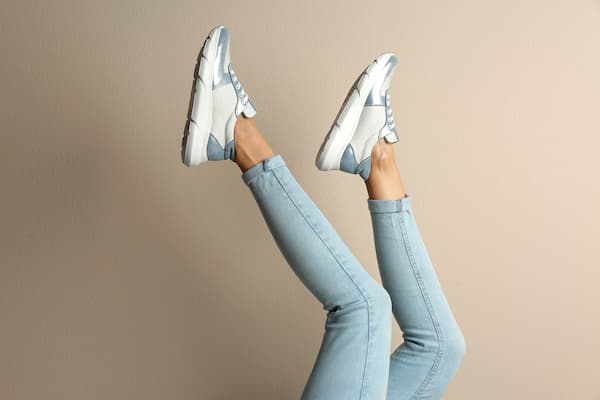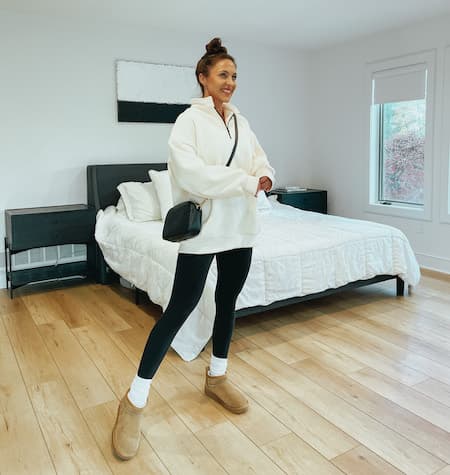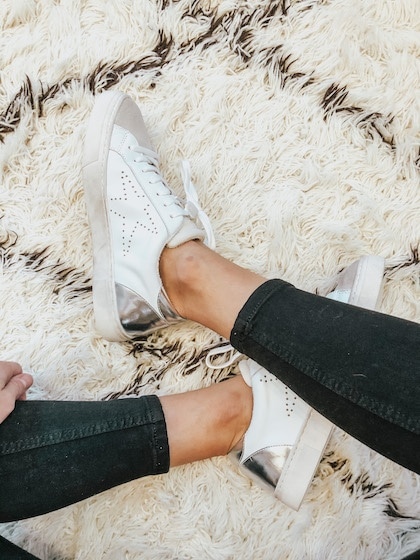What Is A Shoe Lift? Lifts For Leg Length Discrepancy
Shoe lifts are a great way to help improve poor posture and lower body alignment.
They can help to reduce pain and strain in the feet and legs, help with issues like heel spurs or plantar fasciitis, and can also help to add a few extra inches to your height.
Shoe lifts are also used for people with leg length imbalances caused by conditions like osteoarthritis or Charcot-Marie-Tooth disease.
But what exactly is a shoe lift?
In this post, we’ll talk about what a shoe lift is, the types of shoe lifts available, and how to use them.

What is a Shoe Lift?
A shoe lift is a small device that’s made to give the wearer additional height or relieve discomfort.
It’s an in-shoe comfort product that’s used to help relieve foot and ankle pain caused by certain medical conditions like lower back pain, arthritis, or chronic heel pain.
Shoe lifts come in a variety of designs and sizes and are typically placed within the shoe or worn externally.
How is a Shoe Lift Used?
Shoe lifts are used to add height to the wearer, to align the hips, legs, spine, and shoulders into a better posture, and for those with short leg syndrome.
These lifts can be really helpful for people who have one leg that’s shorter than the other or have a spine that’s out of alignment causing temporary leg length differences.
They are usually used by medical professionals to help people with scoliosis and discrepancies in leg lengths.
Shoe lifts can also be used for people who don’t have a leg length discrepancy but want a little boost in height.
This can be for aesthetic reasons, to improve posture, to help with leg fatigue from wearing heels, or to help give some relief from back and joint pain and issues like Achilles tendonitis.
Types of Shoe Lifts
There are so many shoe lifts to choose from!
Most of the differences are in material, quality, and how much they can be adjusted.
Make sure you ask your doctor about the use of shoe lifts before you choose a type, so you can get the appropriate kind for your specific needs.

Felt Heel Cushions
This shoe lift heel pad adheres to the inside of your shoe and is designed for pain relief.

Invisible Height Increasers
Invisible height increasers are a type of lift that is great for reducing pain from plantar fasciitis, bone spurs, and calloused feet.
This shoe lift is worn almost like a sock.

3 Layer Adjustable Orthotic Shoe Lift
Adjustable height shoe lifts are great for people who are using physical therapy to rehab issues like a temporary limb length discrepancy that will change over time.
Adjustable heel lifts can be changed as progress is made.
These are also great for moving from shoe to shoe if you need different heights for different shoes and can be used in place of the original sole of the shoe.

The evenup shoe lift is a popular adjustable lift choice as it can be worn on either the left or right foot, and it has several height adjustments.
It’s a great choice for temporary leg length discrepancies due to wearing an orthotic walking boot, cast, etc.
The evenup shoe lift is worn on the uninjured foot to even out any differences in length and in doing so, helps to alleviate body strain.

Air Cushioned Height Increasers
These increases have multiple layers that can be added or taken away.
The specific use for these is to increase your height and can be placed into any pair of shoes you choose.
Benefits of Shoe Lifts
We’ve talked about a lot of the benefits of shoe lifts, but let’s recap.
The use of heel lifts is necessary for some and just a preference for others, but they can be really helpful either way!
1. Improved Gait
Wearing shoe lifts can help correct uneven gait and improve the way you walk by helping you make even steps. This helps to reduce posture issues, alleviate back and knee pain, and increase circulation.
2. Height Increase
Shoe lifts can add up to 3 inches of height, which can be great for those who are too short or too tall for their chosen profession.
Additionally, they can help even out an uneven leg length.
3. Reduces Foot Pain
Shoe lifts help to redistribute weight off the balls of the feet, which can help to reduce pain and discomfort when walking or running.
4. Improves Posture
Shoe lifts can help to correct postural issues such as bowed legs, flat feet, pigeon toes, and roll-in feet.
You should definitely see a doctor before using shoe lifts for this kind of treatment.
5. Enhances Flexibility
Wearing shoe lifts can help to improve flexibility in the ankles, hips, and knees, which can help to reduce the risk of injury.
6. Enhances Performance
Shoe lifts can help to increase performance by decreasing the amount of energy you use while you’re walking or running.
This can help boost endurance and speed.

Disadvantages of Shoe Lifts
Shoe lifts have their pros and cons, like most things. Some disadvantages of wearing shoe lifts are:
1. Uncomfortable
Shoe lifts can be uncomfortable to wear, especially if you’re used to low-profile shoes.
The hard plastic of the lift may rub against your foot resulting in pain and discomfort.
They can also create issues where there are no issues yet and create a greater risk of problems like knee, hip, and low back pain.
That’s because you’re changing your posture and walking patterns, so if you don’t actually have issues with those things, you may have pain when adjusting to shoe lifts.
This is the reason we recommend you see a doctor before using any kind of shoe lift.
2. Unstable
The extra height of a shoe lift can throw off your center of gravity, making it unsafe to wear and awkward to walk in.
Your foot may slip inside the lift and cause injury.
3. Visible
Depending on the type of shoes you’re wearing, shoe lifts may be visible. To some, this may be embarrassing.
4. Expensive
The cost of a shoe lift itself can be relatively expensive.
Additionally, depending on the brand and type of shoe, you may have to pay for custom soles and inserts. This can add to the cost of the shoe lift.

Shop 5-Layer Height Increase Insoles
How to Choose the Right Shoe Lift
If you see a doctor to choose a shoe insert, they will help you make sure you get the right set for the job.
But if you’re choosing on your own, you’ll want to consider a few different factors.
1. Determine the type of shoe lift that you need
This will depend on the height and style of the shoe that you’re wanting to lift, as well as the amount of lift that you need.
2. Measure for the shoe lift
Measure the space between the bottom of the sole and the highest point of the heel. If you have a flat foot, the space should be at least 5-6mm. If you have a higher arch, allow for more space.
3. Check the material of the lift
The material should be lightweight and flexible enough to follow the contours of your feet.
4. Try it on
Try on the shoe and the lift at the same time. Make sure that it fits right and isn’t too tight or too loose.
5. Determine if the lift is adjustable
Some shoe lifts are adjustable, so you can adjust the height and fit to suit your needs.
6. Consider the price
Make sure that you take into account the cost and any additional features that may be offered with the shoe lift.
Shoe lifts can be a helpful accessory for lots of reasons! Just remember that they should be carefully selected and used appropriately or they can cause other unnecessary issues.
Shoe lifts are available in different sizes, fits, and materials, and for different purposes.
Make sure you get the appropriate size and fit to work for your specific needs.
It’s best to consult a doctor if you’re using shoe lifts to treat any kind of pain or a leg-length difference.
Conclusion
Whether you have leg length inequality, physical pain, or just want to give yourself some added height, shoe lifts can be a great solution.
With so many options on the market today, you’re bound to find one that suits your specific need.
Just remember that different types of shoe lifts can be best for different instances, so taking your specific needs into account is imperative.
Other Posts You Might Like:





